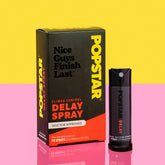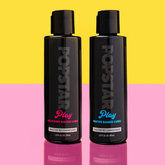Penis friction burn refers to a form of skin irritation or injury that occurs on the penis due to excessive rubbing or chafing, often during sexual activity, masturbation, or from tight clothing. Although it might seem minor at first, this condition can lead to discomfort, pain, and potential complications if not properly managed. In this comprehensive article, we’ll explore the causes, symptoms, treatments, and prevention strategies for penis friction burn, helping you stay informed and protect your reproductive health.
Table of Contents
- What Is Penis Friction Burn?
- Causes of Penis Friction Burn
- Signs and Symptoms
- Treatment Options
- Frequently Asked Questions
- Prevention and Lifestyle Tips
- Conclusion
- References
What Is Penis Friction Burn?
Penis friction burn is a type of skin irritation experienced when the penile skin is subjected to repeated rubbing without adequate lubrication or protection. This rubbing leads to heat generation and micro-tears in the skin’s protective barrier, causing symptoms like redness, inflammation, pain, and sometimes swelling. While friction burns can happen to any part of the skin, they can be particularly painful and concerning when they affect sensitive areas such as the penis.
Friction burns on the penis are not usually severe, but they can become increasingly painful if the underlying cause is not addressed. Some individuals might develop complications like infection, persistent redness, or chronic irritation if protective steps aren’t taken. Understanding penis friction burn is the first step in taking effective measures to treat and prevent this issue.
Causes of Penis Friction Burn
Several factors contribute to penis friction burn. Often, it’s a combination of lack of lubrication and repetitive motion. Below are some of the most common causes:
- Vigorous sexual activity: Repeated thrusting or masturbating without adequate lubrication can produce heat and skin damage.
- Tight or rough clothing: Clothing that consistently rubs against the penis can irritate the skin over time.
- Dryness: Decreased natural lubrication, especially if you are using certain medications or have underlying dermal conditions, can heighten susceptibility to friction burns.
- Allergic reactions: Certain products like soaps, lotions, or latex barriers may cause inflammation, lowering the skin’s natural resilience.
- Poor hygiene: Excessive buildup of sweat and bacteria can weaken the skin’s integrity.
By recognizing these causes, you can take proactive steps to reduce the risk of injury and better protect the sensitive penile skin.
Signs and Symptoms
The signs and symptoms of penis friction burn may vary in intensity depending on the severity of the irritation. Common symptoms include:
- Redness and inflammation: The affected skin often appears pinkish or red, accompanied by swelling.
- Pain or stinging sensation: A distinct burning or stinging feeling can occur, especially during contact with clothing or when urinating.
- Dryness and peeling: The damaged top layer of skin can start to peel or flake off, expanding the discomfort.
- Itching or irritation: Itchiness may emerge as the skin begins to heal or if it becomes overly dry.
- Small sores or abrasions: In more advanced cases, small cuts or abrasions may develop on the skin’s surface.
Early detection of these symptoms allows you to manage the issue promptly and reduce the chance of more severe complications such as infections or long-term scarring.
Treatment Options
Treating penis friction burn can be relatively straightforward if tackled early. Most cases improve with home remedies, gentle skin care, and temporary lifestyle adjustments. Below is an overview of the most common treatment approaches:
1. Immediate Care
Cleaning: Gently cleanse the area with lukewarm water and mild, fragrance-free soap. Pat dry carefully to avoid further irritation. This step clears away any bacteria or sweat that could aggravate the affected skin.
Application of Cool Compress: To reduce inflammation and pain, you may apply a cool compress for short intervals. Make sure to place a thin cloth between the compress and the skin to prevent accidental cold burns.
2. Topical Treatments
- Antiseptics: For minor open sores or breaks in the skin, gentle antiseptic solutions can help keep the area clean and reduce infection risk.
- Moisturizers and healing ointments: Products containing ingredients like aloe vera, vitamin E, or hypoallergenic lubricants can assist in accelerating skin repair.
- Prescription creams: If the injury is more severe, your healthcare provider may suggest antibiotic ointments or steroid creams to reduce inflammation and promote tissue recovery.
3. Pain Management
Over-the-counter pain relievers (e.g., ibuprofen or acetaminophen) can alleviate discomfort, though you should first consult with a healthcare professional if you have underlying health conditions. Maintaining good hydration and rest also aids in faster healing and overall comfort.
4. Avoiding Further Irritation
During the healing process, it is crucial to avoid activities that can exacerbate the burn, such as vigorous masturbation or sexual intercourse without proper lubrication. Opting for breathable, loose-fitting undergarments will lower the risk of added friction and further damage.
5. Medical Consultation
Although penis friction burns generally respond well to home remedies, certain situations call for medical attention. Seek professional care if you notice symptoms such as persistent pain, yellowish or greenish discharge (a sign of infection), or signs of swollen lymph nodes. Delaying intervention can lead to complications, so it is always best to err on the side of caution.
Frequently Asked Questions
1. Can Penis Friction Burn Cause Scarring?
Scarring is not common but can occur on rare occasions, particularly if the friction burn is deep or if secondary infections arise. Proper wound care and keeping the area clean and moisturized significantly lower the risk of scarring.
2. How Long Does It Take to Heal?
Minor penis friction burns typically begin to improve within a few days, but complete healing can vary from one to three weeks depending on the severity of the irritation, your immune response, and how diligently you adhere to care recommendations.
3. What If My Symptoms Worsen Instead of Improving?
If your symptoms worsen, you develop unusual discharge, or the problem persists beyond a week with no obvious signs of improvement, consult a healthcare professional. This may indicate infection or another underlying dermatological condition that needs specialized care.
4. Can Friction Burn Occur During Protected Sex?
Yes. Friction burns can happen even when you use condoms, especially if there’s insufficient lubrication or if you’re using condoms that are too tight or made of materials to which you might be allergic. Adding a water-based or silicone-based lubricant can help reduce friction.
5. Are There Over-the-Counter Products That Help?
Yes. Various over-the-counter products, such as mild antiseptic creams, aloe vera lotions, or specialized friction-reduction balms, can offer relief. Always read labels closely and avoid creams containing harsh chemicals or fragrances that may exacerbate irritation.
6. Is It Safe to Continue Sexual Activity While Healing?
If the burn is mild, some people choose to continue sexual activity with caution and additional lubrication. However, it’s generally advisable to let the skin heal. Any continued friction can delay recovery and increase the risk of further injury.
7. Can I Use Petroleum Jelly for Lubrication?
While petroleum jelly can lower friction, it may trap moisture and bacteria if not used carefully. It can also break down latex condoms, reducing their effectiveness. It’s safer to use lubricants explicitly formulated for sexual activity to ensure your chosen product is condom-compatible and gentle on sensitive skin.
8. Do Certain Medical Conditions Increase Risk?
Men with chronic skin conditions like eczema or psoriasis may be more prone to friction-related injuries due to compromised skin barrier function. Additionally, conditions such as diabetes can slow healing and raise infection risks, making it especially important to follow thorough hygiene and consult healthcare advice promptly.
9. Should I Apply Disinfectants or Alcohol on the Wound?
Using harsh disinfectants or alcohol on sensitive penile skin can exacerbate discomfort and further damage the tissue. Opt for gentle antiseptic solutions or mild saline washes. Most importantly, consult your healthcare provider if over-the-counter products aggravate pain or do not provide relief.
10. When Should I Seek Medical Help?
If you see alarming symptoms like pus, intense swelling, fever, or persistent pain, it’s best to consult a healthcare professional. Early evaluation helps prevent complications, ensures proper healing, and addresses any underlying health issues.
Prevention and Lifestyle Tips
Preventing penis friction burn largely hinges on moderation, mindful personal hygiene, and using protective measures when you anticipate high levels of friction. Below are valuable pointers to keep in mind:
- Use adequate lubrication: During sexual activity or masturbation, use sufficient lubrication, especially if you notice dryness or experience discomfort often.
- Invest in high-quality apparel: Opt for soft, breathable undergarments that don’t trap moisture and reduce excessive rubbing.
- Practice gentle hygiene: Cleanse the area without vigorous scrubbing. Mild, fragrance-free cleansing agents help maintain a healthy skin barrier.
- Take breaks: Prolonged sexual activity or repetitive motion can lead to aggravated skin. Rest intervals reduce the chance of developing friction burns.
- Check for allergies: If you suspect certain latex or lubricants are causing irritation, explore alternatives such as non-latex condoms or hypoallergenic products.
- Stay hydrated and maintain healthy skin: Proper hydration and a balanced diet can enhance skin elasticity and resilience, decreasing the risk of friction damage.
Incorporating these tips into your daily routine fosters long-term penile health and comfort, minimizing the likelihood of friction-based injuries.
Conclusion
Penis friction burn is a common yet often preventable irritation of the penile skin caused by insufficient lubrication, repetitive motion, or dry and compromised skin. By understanding the causes and identifying the warning signs early, you can apply at-home remedies such as proper cleaning, cooling compresses, and topical ointments to expedite the healing process. Equally important is adopting habits to prevent further damage—wearing suitable clothing, using adequate lubrication, and managing any underlying health conditions that may heighten your vulnerability.
Although most cases can be resolved with straightforward measures, always be attentive to any escalating symptoms or persistent discomfort. Seeking timely medical attention can halt complications and ensure a complete recovery. If treated correctly and prevented with good habits, penis friction burns need not pose a significant, long-term challenge to your overall sexual and reproductive health.
References
- Kovacs, L. (2020). Skin Integrity in Repetitive Motion Injuries. Journal of Dermatological Health, 12(4), 42-50.
- Smith, D.L., & Anderson, J. (2019). Understanding Friction-Induced Dermatitis and Associated Treatment Protocols. Men’s Health Insights, 7(3), 187-194.
- Raheem, A.A., & Parsons, J.K. (2021). Common Genital Skin Lesions and Irritations. American Urological Review, 15(2), 98-104.


































